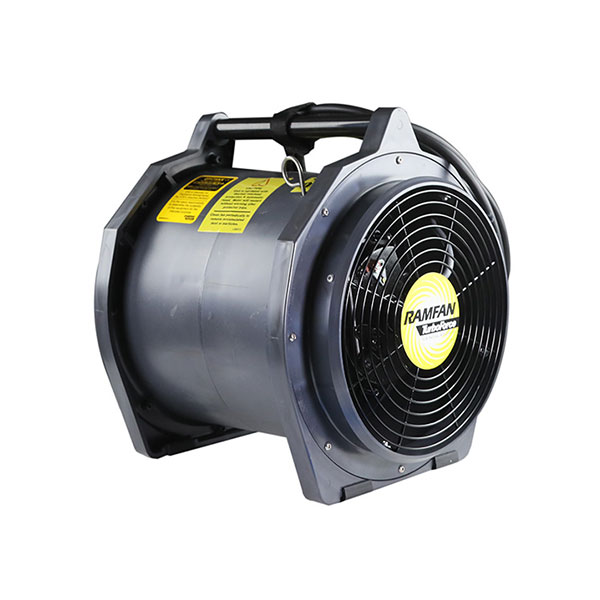Introduction:
Explosion-proof blowers are used primarily to move gas or air from one place to another. For example, HVAC systems often have a blower to expel the hot air outside. On the other hand, cooling towers in industries use blowers to move the hot air upward. These use mechanical force in a specific direction to propel the gas or air molecules in the same way. You can consider a blower somewhere between a fan and a compressor. It can exert more pressure on the gas than a fan but is less powerful than a compressor.
Although blowers are of different types, not all of them can offer optimal safety. Most models are at a high risk of exploding when operated in the presence of flammable gases, dust, or vapor. This is where a special category of blowers is used, named explosion-proof blowers. These are specifically designed to prevent any accident and maintain optimal safety in the work environment. That being said, we have prepared a detailed guide, explaining what is explosion-proof blower and its uses in different industries. Additionally, we have also covered their working mechanism and the different models prevailing in the market.
What is an explosion-proof blower?
Most industries regularly exhaust hazardous fumes. Regular blowers can increase the risks of sudden explosions due to electrical sparks or excessive heat discharge. This can not only put the personnel’s safety at risk but also damage the entire setup. That’s why specially designed blowers are preferred for moving gas volumes to mitigate the damage.
Truth be told, understanding what an explosion-proof blower is can help you make the right call for your business. So, let’s explore what this is.
An explosion-proof bowler is a specially designed air-moving device for environments filled with hazardous vapors, chemical dusts, and gases. Its construction ensures that it can operate safely by eliminating the risks of explosions. Unlike regular blowers, it doesn’t cause any electrical spark or discharge a high heat amount.
How do explosion-proof blowers work?
We have already explained what an explosion-proof blower is. Now, it’s time to explore its working mechanism so that you can have a clear idea about its benefits. That being said, below, we have outlined a few points that will help you understand how it works differently from other blowers.
Airflow and exhaust
Explosion-proof blowers are reinforced with high-quality motors and impeller blades. Together, they exert an axial or centrifugal force to expel the exhausting hazardous fumes from within the enclosed chambers or towers. It prevents the chemicals from accumulating in a single place, thereby reducing the risks of explosion or any other form of workplace accident.
Sealed motor housing
The motor in the explosion-proof blower is enclosed completely in a protected metal housing. This eliminates the mechanical part’s exposure to the outside environment, so no heat discharge or electrical spark from the motor can cause an accident.
Non-sparking components
Critical working parts like the housings or fan blades are made from steel, brass, or aluminum to ensure they won’t generate electrical sparks when in use and cause sudden massive accidents.
Explosion-proof certification
Every explosion-proof blower needs to remain compliant with different industry regulations. These are:
- ATEX in Europe
- UL and CSA in North America
- IECEx
- NFPA or National Fire Protection Association
Grounding and static protection
Regular blowers can accumulate static electrical charges in their exterior body. As a result, the risks of electrical sparks in hazardous environments are significantly increased. That’s why many explosion-proof blowers come with grounding protection for safer electrical discharge.
Extreme temperature tolerance
When used in chemical plants or oil refineries, blowers are often exposed to extreme temperatures. They generate excessive heat in the surroundings, which, if they come in contact with hazardous fumes, can cause explosions. That’s why explosion-proof blowers are designed with higher temperature tolerance limits. They can work seamlessly in extreme conditions without overheating.
Industries and applications of explosion-proof blower
Pharmaceutical and chemical industry
- Removal of toxic chemical fumes during the manufacturing process
- Ventilation in chemical labs and storage houses
- Prevention of fume buildups in chemical tanks
Mining
- Removal of coal dust from mines
- Circulation of fresh air in underground tunnels and enclosures
- Expelling hot air to cool down heavy machinery
Oil and gas industry
- Ventilation in offshore oil rigs and refineries
- Cooling gas circulation at compressor stations
Wastewater treatment plants
- Expelling hydrogen sulfide and methane from wastewater tanks
- Proper aeration of sewage water
Coating and paint industry
- Ventilation in spray painting booths
- Prevention of mist accumulation in enclosures that could cause explosions
- Efficient removal of solvent chemical vapors during coating processes
How to choose the right explosion-proof blower?
Now that you have a detailed understanding of an explosion-proof blower, let’s find out how to choose the best model.
- Every model should be compliant with the safety standards based on the hazardous level you deal with.
- You need to check three significant specifications of the concerned blower models. These include:
- Airflow determines the volume of air that can be moved in a minute
- Operating temperature range of the blower
- Static pressure that determines the resistance against airflows
- Explosion-proof blowers come in four different configurations. Choose the model that best meets your business needs.
- Positive displacement blower
- Centrifugal blower
- Axial blower
- Regenerative blower
- Choose a blower that is made of durable material for higher longevity and efficiency.
Comparison: Top explosion-proof blower models
Model |
CFM |
Power |
Hazard rating |
Best for |
| EFi120xx/EFi150xx | 16/40 scfm | 1.2/1.5 HP | ATEX Zone 1 | Chemical industry |
| EFi75xx | 2,500 cfm | 0.75 HP | ATEX Zone 1 | Oil and gas |
| AFi75xx | 2042 cfm | 6.4 HP | ATEX Zone 1 | Chemical plants |
Conclusion
This detailed discussion has highlighted what an explosion-proof blower is and its in-depth working mechanism. With this, it’s evident why this equipment has become a savior across several industries, be it chemical or paint manufacturing. However, you need to find the best model that aligns with your specific business needs to harvest the benefits this blower has to offer.

